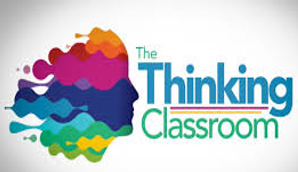Equipping Malaysian Students with Critical Thinking Skills for Life in Cyber World – 3 December, 2018
Malaysians are spending more time in cyberspace knowing that there is no quality control on the information published on the web. The web is filled with all sorts of information that pour scorn on our ethnicity, race, value systems, religious beliefs, perspective of life, sexual orientation, cherished customs & traditions and so forth. The irony is that netizens condone the spread of such information when they eagerly send and re-send text messages, video clips and podcasts to their contacts through various social media without checking their credibility.

Hence, it becomes the responsibility of individuals to judge what is right, what is wrong, what is immoral, what is illegal, what is biased or totally incorrect. This process of judging is called ‘critical thinking’ and a person can be a good, average or poor critical thinker. For example, a teenager who falls prey to online predators has made an error in judgement which is the root of difficulties, problems and tragedies confronting the young. Fortunately, critical thinking can be taught and learnt and is incumbent that the education system should strengthen the capacity of young people to make good judgements when surfing cyberspace.
What is Critical Thinking?
Critical thinking is oftentimes misunderstood to mean criticising or pointing out weaknesses and finding fault. The term ‘critical’ is derived from the Greek word kritikos which means to question, to make sense of, to be able to analyse. Ennis (1985) defined critical thinking as deciding whether to believe claims and finding valid evidence before making a decision. Students who think critically evaluate whether to accept a particular argument as appropriate or reasonable. Critical Thinking is composed of TWO components – Critical thinking abilities & skills and Critical thinking attitudes & dispositions.
a) Critical Thinking Abilities & Skills which is a collection of abilities & skills which are used to evaluate and check the credibility of information such as recognising vague & ambiquous language, identifying assumptions, stated or unstated reasons and spotting fallacies in thinking (red herring, bandwagonism, slippery slope, oversimplication).
b) Critical Thinking Attitudes & Dispositions which is a collection of attitudes such as being open-minded, rational, curious, desire clear explanation, sensitive to other people’s feeling, objective, not impulsive, logical and values accuracy.
Do students need help in critical thinking? Yes they need help because evidence suggest that most students do not learn to think critically by themselves – they need adult guidance (parents & teachers) to develop critical thought. The need for developing critical thinking was never more important than today when students (from preschool to higher education) are incessantly bombarded with countless bits of information. The onus is upon students to determine what to believe and what to ignore.
Schrock (2000) developed a set of criteria for critically evaluating information on the web:
- Trustworthiness – Is the information accurate and honest?
- Objectivity – Is the information objective and not biased?
- Authority – Is the sources of the information, qualifications and experience of the author known?
- Relevance – Is the information current and updated?
Creating the Critical Thinking Classroom

Simply having a thinking skill does not mean that children will use it. In order for such skills to become part of day-to-day behaviour, they must be cultivated in the classroom.
Organising the Classroom for Thinking – A well organised classroom encourages thinking and the main aim is to provide opportunities for students to participate in the teaching-learning process. It would be impossible to develop thinking skills of students if the teachers did most of the talking. Children need to be actively involved and among the teaching techniques that should be used are small-group sessions, think-pair share technique and other collaborative learning techniques. Students should also be assigned to work individually on ‘thinking tasks’ monitored by the teachers and later shared with classmates.
Teacher Reponse Behaviour – These are how the teacher responds to the questions students ask, the ideas students put forward and so forth. The teacher who responds negatively such as “What a dumb idea” or “You’re not good enough” will discourage students from saying anything in the future. Students are sensitive to the way in which teachers respond to them. Even the tone of voice of the teacher can affect whether students will ever ask questions or argue. It should be remembered, “The only dumb question is the one that is not asked”.
Language of Teaching – It is common for teachers to say, “You should think hard” or “Did you think through carefully?”. What is the meaning of these statements?. Children need more clarity in the words used by teachers. Using specific thinking terminology will show students how to perform particular skills. For example, instead of saying “let’s look at these two pictures”, it would be more accurate to say, “Let’s compare these two pictures”. “Compare” is thinking skills that will indicate to students what to do. Other examples of precise thinking words are: predict, classify, conclusions, evidence, analyse and so forth which tell students more precisely what they should do.
References:
- Critical Thinking is Vital in the Age of the Internet by Shen Li-Lee, Nurture for the Future.
- Phillips, J.A. (1996). Developing Critical and Creative Thinking in Children. Selangor: Lingua Publication Sdn. Bhd.
- Phillips, J.A. (1997). Pengajaran Kemahiran Berfikir: Teori dan Amalan. Kuala Lumpur: Utusan Publications Sdn. Bhd.